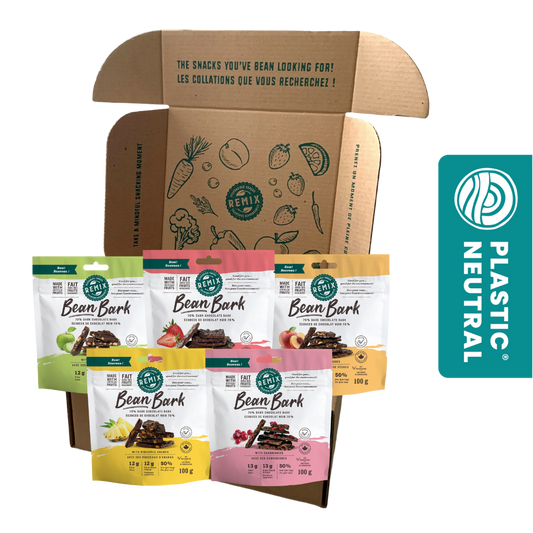
Written by: Megan Hardi, October 2020
The term “lactose intolerance” is a term regularly brought up especially when talking about dietary restrictions. To put it simply, individuals with lactose intolerance do not have the ability to digest the sugar lactose found in mammalian milk (1).
Fun Fact: Human milk contains almost TWICE as much lactose as cow’s milk (7.2g /100mL and 4.7g /100mL, respectively) (1).
Lactose is a natural disaccharide, composed of two monosaccharides (or simple sugars) of galactose and glucose. In order to digest lactose and break it down into its components, individuals require the enzyme lactase. This enzyme is specifically designated to break down lactose in the small intestine of our bodies to provide energy for growth and development, particularly, during infancy (1). Interestingly, the expression of the lactase enzyme peaks at birth and slowly declines within the first few months after (1). As a result, individuals progress to develop lactase non-persistence or deficiency and thus, lactose intolerance. Lactose intolerance can also be a genetic variation or a decrease in the activity of the gene that encodes for the lactase enzyme, the LCT gene. (5)
There are numerous foods that contain lactose, such as ice cream, cheese, yogurt, and many more (2). Food products that contain raw or processed cow’s milk will have the presence of lactose and are products that lactose-intolerant individuals tend to consume in small amounts. It is a common misconception that lactose-intolerant individuals are unable to digest lactose at all; however, these individuals can consume lactose-containing foods products but only in small amounts due to their limited amount of lactase.
Although lactose intolerance heavily relates to milk-containing foods, lactose intolerance should not be confused with a milk allergy. Upon intake of milk, individuals with a milk allergy will experience vomiting, hives, and bloody stools as their bodies perceive the proteins found in milk, whey, and casein, as dangerous (3). This response reflects how their immune system reacts towards milk proteins, which is not the case in individuals experiencing lactose intolerance.
How to Tell if You’re Lactose Intolerant?
Have you ever had a full glass of milk or a bowl of ice cream and experienced flatulence? Diarrhea? Or abdominal pain? These are symptoms of lactose intolerance: since the lactose ingested cannot be broken down, the gut microbiota in our large intestine ferments the sugars (1).
A self-assessment may be the first step in determining whether or not you are lactose intolerant as it is important to understand the effects of foods on your body. Taking note of any physical reaction after consuming milk products can give you insights into how your body is capable of digesting lactose. If you are experiencing some of the symptoms of lactose intolerance but are still unsure, cutting down lactose-containing products may improve your symptoms.
If you require a second opinion, a doctor can carry out a hydrogen breath test or a blood sugar test to fully determine a lactose intolerance diagnosis.
Lactose Intolerance Around the World
About 75% of the world's population will develop a lactose intolerance after infancy, once they are fed foods besides breast milk (4). Interestingly, some populations have developed lactose tolerance which allows them to have no problems digesting the lactose found in milk products (4). Lactose tolerance is claimed to be a recent example of human evolution, called the gene-culture co-evolution (4). This is because lactose tolerant individuals possess a different genetic trait than individuals who are lactose intolerant, and the genetic trait is tied to a cultural trait (4).
The ability to digest lactose can be a reflection of the nutritional benefits of milk. Individuals from Northern Europe have the lactose tolerance gene variation because of their high consumption of Vitamin D in their diet that promotes calcium uptake, allowing them to have strong dense bones. The relatively high uptake of calcium helps these individuals, who live in regions with low sunlight exposure, to prevent them from diseases, such as rickets (4). Meanwhile, in African populations, these individuals benefit from lactose tolerance because milk is a source of extra calories and nutrition (4).
Table of Lactose Intolerance from Different Populations (4)
| Human Group | Individuals Examined | Lactose Intolerance (%) |
| Dutch | N/A | 1 |
| Europeans in Australia | 160 | 4 |
| British | N/A | 5-15 |
| Central Italians | 65 | 19 |
| Indians | N/A | 20 |
| African Bantu | 59 | 89 |
| Asian Americans | N/A | 90 |
| Chinese | 71 | 95 |
| Southeast Asians | N/A | 98 |
| Thais | 134 | 98 |
| Native American | 24 | 100 |
On the other hand, individuals who have ancestors that lived in lands with extreme climates and were unable to sustain dairy herding, developed lactose intolerance before the 1900s (6). This reflects the high percentage of individuals with lactose intolerance in many parts of Asia.
FUN FACT #2: Around 60% of Asian descendants stop producing the lactase enzyme as they get older (6)
Substitute Options for Someone who is Lactose Intolerant
Due to globalization and improved industrial processing, especially within the food industry, there have been many developments of food products for lactose intolerant individuals. It is no longer recommended for lactose intolerant individuals to cut off dairy products as the intake of such products is important in making sure these individuals do not experience deficiency in calcium, protein, magnesium and other minerals as they are important for growth and development (7). Thus, lactose intolerant individuals are recommended to restrict dairy products, rather than omit them.
Within the food industry, there is a rise in the production of non-dairy substitute products. These products are mainly derived from plants, such as oats, soy, hemp, almond and other nuts (7). It is now very common to substitute bovine milk for these plant-derived milks. Unfortunately, these substitutes do not show the same levels of calcium, vitamin D, and protein as bovine milk (7), which is why many of these products are fortified with nutrients to ensure the consumer receives sufficient amounts of the required nutrients.
FUN FACT #3: Only bovine milk and fortified soy milk has shown to be nutritious enough for children 1-8 years old.
Another method of allowing lactose intolerant individuals to freely consume dairy products or foods containing lactose is to take lactase in the form of capsules or adding the enzyme to the food prior to consumption (7). Consuming lactase allows the pre-digestion of lactose and thus, individuals do not experience symptoms of flatulence, abdominal pain, and diarrhea.
If you are lactose intolerant but you love cheese, it is beneficial to consume hard cheeses instead of soft ones. This is because during the production of hard cheese, bacteria is added to the lactose-containing milk and they break down the lactose; allowing for less amounts of lactose in such cheeses (8). Of course, each cheese varies in the amount of lactose it contains (even hard cheeses!), so it is important to check food labels before consumption!
Whether or not you are lactose intolerant, there are many food products that can satisfyyour hunger and appetite while ensuring you still gain enough nutrients! If you are lactose intolerant, perhaps this is your chance to discover new favorites, such as fortified soy milk or lactose free cheese, in your daily diet!
If you are lactose intolerant but you love chocolate, look for dark chocolate options which typically do not contain any milk! A good option is Remix Bean Bark as it is dairy-free, nut-free, and also gluten-free!
References
-
Lomer, M. C., Parkes, G. C., & Sanderson, J. D. (2008). lactose intolerance in clinical practice–myths and realities. Alimentary pharmacology & therapeutics, 27(2), 93-103.
-
“Managing Lactose Intolerance.” Managing Lactose Intolerance - Unlock Food, Dieticians of Canada, 7 Sept. 2019, www.unlockfood.ca/en/Articles/Allergies-and-Intolerances/Managing-Lactose-Intolerance.aspx.
-
“Milk & Dairy Allergy.” ACAAI Public Website, American College of Allergy, Asthma, and Immunology, 21 Mar. 2019, acaai.org/allergies/types-allergies/food-allergy/types-food-allergy/milk-dairy-allergy.
-
Silanikove, N., Leitner, G., & Merin, U. (2015). The interrelationships between lactose intolerance and the modern dairy industry: global perspectives in evolutional and historical backgrounds. Nutrients, 7(9), 7312-7331.
-
Järvelä, I., Torniainen, S., & Kolho, K. L. (2009). Molecular genetics of human lactase deficiencies. Annals of medicine, 41(8), 568-575.
-
Lang, S. "Lactose intolerance seems linked to ancestral struggles with harsh climate and cattle diseases, Cornell study finds." Cornell Chronicle (2005).
-
Szilagyi, Andrew, and Norma Ishayek. "Lactose intolerance, dairy avoidance, and treatment options." Nutrients 10.12 (2018): 1994.
-
West, Helen. “6 Dairy Foods That Are Naturally Low in Lactose.” Healthline Media a Red Ventures Company, 22 Feb. 2017, www.healthline.com/nutrition/dairy-foods-low-in-lactose.





